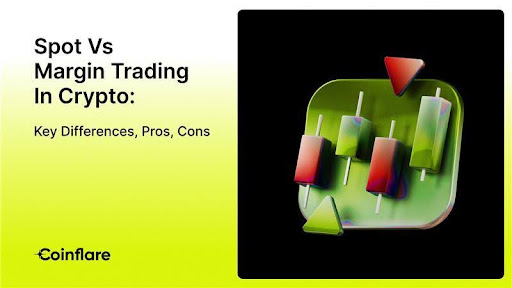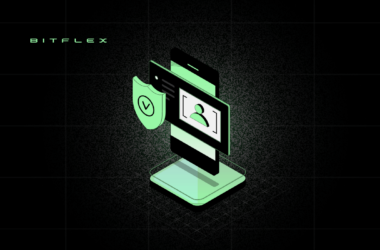Catalogue - Key Takeaways Show
Key Takeaways
Fees can significantly impact profitability: spot trading usually involves lower, one-time fees, while margin trading has ongoing interest costs.
Spot trading involves buying or selling crypto at the current market price with immediate ownership—ideal for beginners and long-term holders.
Margin trading uses borrowed funds to increase position size with leverage—potentially increasing profits but also risk.
Spot trading offers lower risk, no leverage, and full asset ownership, while margin trading comes with higher risk and interest fees but allows for short-selling and greater profit potential.
The spot price is the real-time market price; the margin price includes additional costs like interest from borrowed funds.
Spot crypto trading is safer and simpler, making it better suited for users looking to gradually build their crypto trading profit over time.
Choose spot trading for long-term investment strategies like HODLing and DCA; opt for margin trading only if you’re experienced and comfortable managing risk.

Trading in the cryptocurrency market offers a wide range of opportunities for users to grow their portfolio. Two of the most popular methods are spot trading and margin trading.
Understanding the difference between these trading styles is essential for anyone aiming to make consistent crypto trading profit. Whether you’re a seasoned trader or a beginner, knowing which method suits your goals can help you avoid costly mistakes.
In this article, we’ll explain how both methods work, compare pricing, highlight pros and cons, and recommend the best platforms and strategies for spot crypto trading and margin trading.
What is Spot Trading in Crypto?
Spot trading involves buying or selling crypto assets at the current market price, also known as the spot price. Once the trade is completed, ownership of the asset is transferred immediately.
This method is straightforward—when you buy Bitcoin using spot trading on Coinflare, you instantly own the asset in your wallet.
Key features of spot trading:
- No leverage involved.
- Full ownership of crypto.
- Lower risk compared to leveraged trading.
Spot trading is ideal for beginners and long-term holders who prefer to avoid the complexities of borrowed funds.
What is Margin Trading in Crypto?
Margin trading allows you to borrow funds to open larger positions than your available balance using leverage. This means you can multiply both potential profits and losses.
For example, if you use 5x leverage to trade Ethereum, you’re controlling five times the value of your actual capital.
Key features of margin trading:
- Uses leverage (e.g., 2x, 5x, 10x).
- Potential for amplified returns or losses.
- No immediate ownership—assets are borrowed.
Margin trading is suited for experienced traders who understand risk management and want to maximize short-term crypto trading profit.
Key Differences Between Spot Trading and Margin Trading
Here’s a quick comparison of the two methods:
| Feature | Spot Trading | Margin Trading |
| Pricing | Uses real-time market price | Includes interest/fees on borrowed funds |
| Leverage | Not available | Available (e.g., 2x, 5x, 10x) |
| Risk | Lower risk | Higher risk (due to leverage) |
| Purpose | Asset ownership | Speculative trading |
| Fees | Taker/maker fees | Interest on borrowed funds |
Both methods serve different goals, and choosing the right one depends on your risk tolerance and trading style.
Spot Price vs. Margin Price in Crypto
The spot price is the current market value of a cryptocurrency. It’s the price you pay when you buy or sell on the spot market.
The margin price, however, includes additional costs such as interest fees and borrowing costs. While margin trading allows for greater exposure, it also makes each trade more expensive in the long run.
That’s why beginners often prefer spot crypto trading—it’s transparent and easier to track real costs.
Pros and Cons of Spot Trading and Margin Trading
Spot Trading Pros:
- Simple and beginner-friendly.
- No risk of forced liquidation.
- You actually own the assets you buy.
Spot Trading Cons:
- Limited profit potential (no leverage).
- Cannot short-sell in falling markets.
Margin Trading Pros:
- Amplified potential for crypto trading profit.
- Ability to short-sell and hedge positions.
- Access to advanced trading tools.
Margin Trading Cons:
- Risk of liquidation and margin calls.
- Can be overwhelming for new users.
- Daily interest fees on borrowed amounts.
Spot Trading vs. Margin Trading: Which is Better?
If you’re a beginner or long-term investor, spot trading is the safer and simpler option. You gain full ownership of your crypto and can hold it without worrying about price swings causing liquidation.
For experienced traders who are comfortable with risk and want to actively manage short-term gains, margin trading can unlock powerful opportunities.
Since spot trading doesn’t involve leverage or borrowing, it carries less risk, making it a safer choice for most users.
Fees for Spot Trading vs. Margin Trading
Spot Trading Fees:
- Usually include taker and maker fees (e.g., 0.1%–0.5% per trade).
- Transparent and easy to understand.
Margin Trading Fees:
- Interest on borrowed funds (e.g., 0.02%–0.1% per day).
- Can add up quickly, especially if you hold positions for a long time.
Understanding these fees is crucial as they can significantly impact your overall profitability in both spot and margin environments.
Best Spot Trading and Margin Trading Strategies
Spot Trading Strategies:
- Buy and Hold (HODL): Ideal for long-term investors looking to ride the market over time.
- Dollar-Cost Averaging (DCA): Reduces the impact of volatility by investing a fixed amount regularly.
- Swing Trading: Short to mid-term trades based on market trends.
Margin Trading Strategies:
- Leveraged Long/Short: Take advantage of market upswings or downtrends with amplified positions.
- Hedging: Protect your holdings by offsetting risk using margin trades.
- Arbitrage: Exploit price differences between exchanges using leverage for higher returns.
Choose the strategy that fits your risk profile and trading goals.
Conclusion
Spot and margin trading are two powerful tools in the crypto world. While spot crypto trading offers simplicity, ownership, and safety, margin trading brings higher risk and reward potential. Your choice should depend on your trading goals, market knowledge, and risk tolerance.
Frequently Asked Questions (FAQs)
Is it better to trade on margin or spot?
It depends on your experience and risk tolerance. Beginners should stick with spot trading, while advanced users can explore margin trading.
What is considered a spot trade?
A spot trade is when you buy or sell crypto at the current market price with immediate settlement.
Is margin trading the same as spot trading?
No. Margin trading uses leverage and borrowed funds, while spot trading uses only your available balance.
What are the disadvantages of spot trading?
Lower profit potential and limited ability to profit from market downturns.
What is the difference between spot and margin in crypto?
Spot trading involves direct ownership and no leverage. Margin trading involves borrowing funds and carries higher risk and potential rewards.







